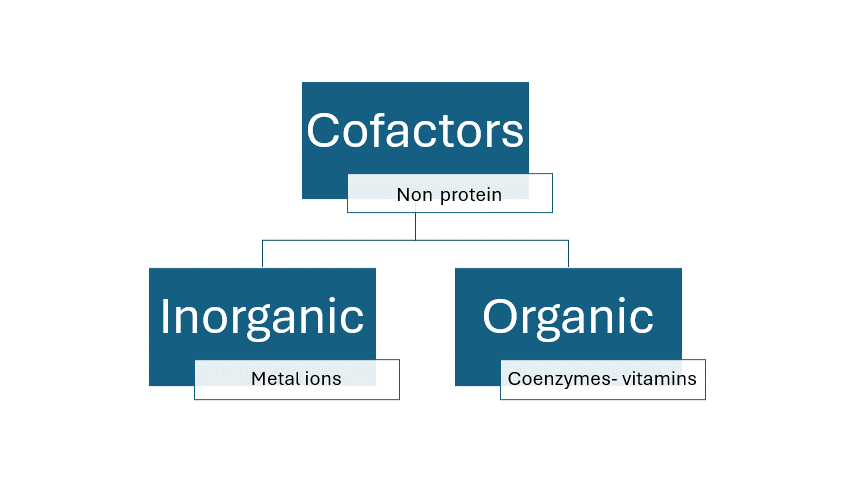
This logo isn't an ad or affiliate link. It's an organization that shares in our mission, and empowered the authors to share their insights in Byte form.
Rumie vets Bytes for compliance with our
Standards.
The organization is responsible for the completeness and reliability of the content.
Learn more
about how Rumie works with partners.
Do you prefer to work alone or with friends?

Some enzymes have friends who help them perform their functions.
The enzyme helpers are cofactors and coenzymes.
Learn how they differ and how they help enzymes to perform their functions.
Did you know?
Enzymes are protein molecules that help perform various functions in our bodies. For example, amylase is an enzyme present in your saliva that can break down starch compounds in food.
Cofactors: The essential helpers
Cofactors are non-protein chemical compounds that bind to an enzyme. They're required for the enzyme's activity and are thus considered essential helpers.

Composition: Can be inorganic ions or organic molecules.
Inorganic: Metal ions like zinc or iron.
Organic: Vitamins or made from vitamins.
Function: Help stabilize the enzyme structure or participate directly in the enzyme's chemical reaction.
Example: Iron is an important cofactor in heme groups of enzymes involved in cellular respiration.
Coenzymes: The organic helpers
Don't let the name "coenzyme" confuse you!

They're not enzymes but a type of cofactor which are organic.
Composition: Organic molecules that are either vitamins or made from vitamins, making them an essential part of your diet. NAD (derived from Vitamin B3) and FAD (derived from vitamin B2) are coenzymes.
Function: Carry chemical groups or electrons during enzyme reactions.
Example: B vitamins act as coenzymes for several enzymes involved in the production of certain amino acids, and thus help in building proteins for our body.
Quick glance at key differences
Cofactors and coenzymes are both non-protein molecules and important for enzyme function, but they differ in composition and specific roles.
Cofactors
They can be inorganic or organic molecules.
They stabilize the enzyme structures or take part in the process.
Coenzymes
They're always organic molecules and mostly vitamins.
They move groups of chemicals or electrons between molecules.
Did you know?
All coenzymes are cofactors, but not all cofactors are coenzymes.
Tips for understanding
Finding it hard to memorize?

Consider the following tips to memorize the differences between cofactors and coenzymes:
Try an analogy
Think of enzymes as construction workers. Cofactors are like the tools they need, which are sometimes metal, sometimes specialized gadgets. Coenzymes are specialized gadgets that fit perfectly for specific tasks, often coming from a specific source (like a vitamin).
Try creating mnemonics
CoFactors = Chemical Friends: Non-protein chemical friends that help enzymes.
CoEnzymes = CoEnergy Movers: Organic molecules that move energy in the form of electrons or chemical groups within the enzyme's reaction.
Quiz
In a school play, the actors are the enzymes. If the coenzymes are like special costumes that help the actors perform their roles, what would the cofactors be?
Cofactors (makeup and props) are essential items that help actors (enzymes) perform better, just as cofactors are necessary for enzyme activity. Special costumes (Coenzymes) are a type of cofactor (makeup and props)
Take Action

To better understand the differences between cofactors and coenzymes:
This Byte has been authored by
Neeba Wilson
Scientific writer
Masters